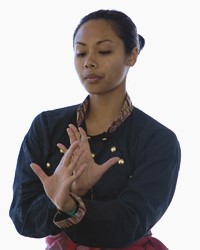Maranao, Lanao in Philippines

Photo Source:
Copyrighted © 2026
Jose Gil - Shutterstock All rights reserved. Used with permission |
Send Joshua Project a map of this people group.
|
| People Name: | Maranao, Lanao |
| Country: | Philippines |
| 10/40 Window: | No |
| Population: | 1,474,000 |
| World Population: | 1,474,000 |
| Primary Language: | Maranao |
| Primary Religion: | Islam |
| Christian Adherents: | 0.00 % |
| Evangelicals: | 0.00 % |
| Scripture: | Complete Bible |
| Ministry Resources: | Yes |
| Jesus Film: | Yes |
| Audio Recordings: | Yes |
| People Cluster: | Filipino, Muslim |
| Affinity Bloc: | Malay Peoples |
| Progress Level: |
|
Introduction / History
The Maranao people have lived on the Southern Philippine island of Mindanao since at least the 13th century. "Maranao" means "people of the lake" referring to Lake Lanao in the province of Lanao del Sur. While the majority of Maranao live in the area surrounding Lake Lanao, many have relocated to Manila as well as to other regions. Maranao refers not just to a people group but also to their language, spoken by people living in the provinces of Lanao del Sur and Lanao del Norte.
What Are Their Lives Like?
The Maranao people derive much of their identity and history from Lake Lanao. Within the surrounding region the primary source of livelihood is agriculture, including the production of such crops as rice, corn, sweet potatoes, peanuts, papayas, bananas, and betel nuts. Lake fishing is also a traditional source of livelihood. The Maranao have a very rich cultural heritage which they seem to enjoy sharing with those outside their culture. Textiles, metalwork, woodcraft, and architecture are all important cultural expressions. The AWANG, or dugout boat used in Lake Lanao, is possibly the most unique and ornate of dugouts. Maranao textiles, which indicate the status of the wearer, are known for their very ornate designs and colors. The predominate instrumental music of the Maranao people is the KULINTANG, performed on a unique set of eight melodious gongs. The KULINTANG musical tradition predates Islam, and is thus shared by both Muslim and non-Muslim people groups throughout Mindanao, as well as in other island nations to the south. The Maranao epic song, known as the DARANGEN, encompasses a wealth of knowledge of the Maranao people, and in 2005 was proclaimed by UNESCO as one of the Masterpieces of the Oral and Intangible Heritage of Humanity.
The Philippines as a whole has a high rate of literacy for a developing country, and this has led to a dramatic increase in literacy among the Maranao people as well. The Maranao are no longer plagued with the rampant illiteracy Dr. Frank Laubach observed there 75 years ago. On the contrary, degree holders are now so numerous that many cannot obtain employment appropriate for their education. Many of the highly educated Maranao must resort to the traditional occupations of agriculture and craftsmanship. The shortage of jobs in the Lanao provinces has probably led to the migration of some Maranao to Manila.
What Are Their Beliefs?
The Maranao are one of several major Muslim people groups in the Philippines which together constitute a small percentage of that country's population. The Maranao province of Lanao del Sur is part of the Autonomous Region of Muslim Mindanao, or ARMM. Like most Muslims in the Philippines, the Maranao consider themselves to be Muslim rather than Filipino. Despite the fact that Islamic beliefs are fervently held, efforts to rid the culture of traditional island beliefs have not been totally successful, and these beliefs persist and mix with the Maranao Islamic faith to some degree.
The Christian and Missionary Alliance was successful in planting a church in a Muslim region of Mindanao in 1902. Dr. Frank Laubach began his work as a missionary to the Maranao people in 1930, a work that ultimately sparked his worldwide literacy program. In 1958 Lutheran missionary Robert McAmis began his work among Muslims in Mindanao. Despite these mission efforts and others, the Maranao remain essentially an unreached people group. Out of a total Maranao population of over one million, there are only 30-50 known followers of Jesus, yet the tools are in place for more. A Maranao New Testament has been available since 1981 and the JESUS Film and radio broadcasts have been made available in the Maranao language.
What Are Their Needs?
If the Maranao people can be reached for the gospel, this very well may have an impact on the other Muslim people groups that inhabit the island of Mindanao. The preferred languages of these groups may be different, but their cultures are similar, and there is a historic solidarity in their common quest for independence. But in order for this to happen, the gospel must be presented in a way that continues to respect and affirm the wonderful qualities of Maranao culture.
The unique combination of rich cultural heritage along with lack of opportunity for highly qualified workers point to several possibilities for outreach to this people group. Those who are willing to become students of the Maranao culture or possibly even exporters of this culture might find open doors. And those who are willing to establish businesses in the region that supply high-level jobs to educated Maranao potential employees are likely to find even more of an open door.
Prayer Points
Pray that the strongholds against the gospel will be broken, that Maranao people will respond to the message of Christ, and that a church will be successfully planted among the Maranao.
Pray for the safety and blessing of the 30-50 Maranao Christians.
Pray for the protection and fruitful ministry of the few Christian workers among the Maranao.
Pray for the needs of the Maranao people—particularly that appropriate jobs will be provided for the many highly educated individuals there.